#jimin photofolio
Photo
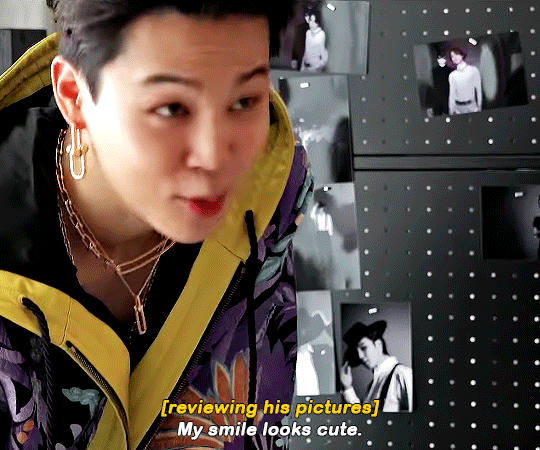


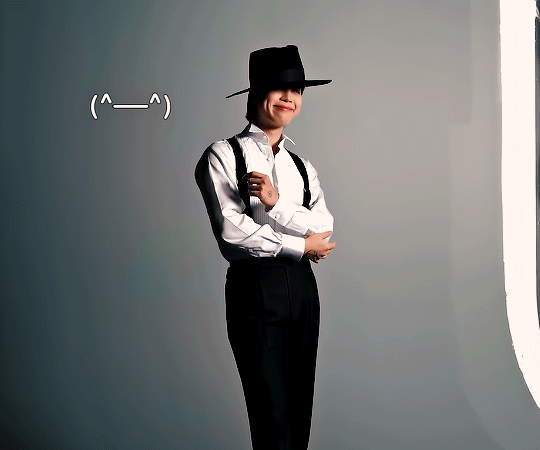

cutest smile on the planet, actually
#btsgif#dailybts#networkbangtan#bangtanarmynet#pjmdaily#btshoneyhive#usermaggie#usersky#userkelli#usermanny#usertaeyungie#me myself and jimin#bts episode#jimin photofolio#*jm#*gifs#ok that's it byee
3K notes
·
View notes
Text
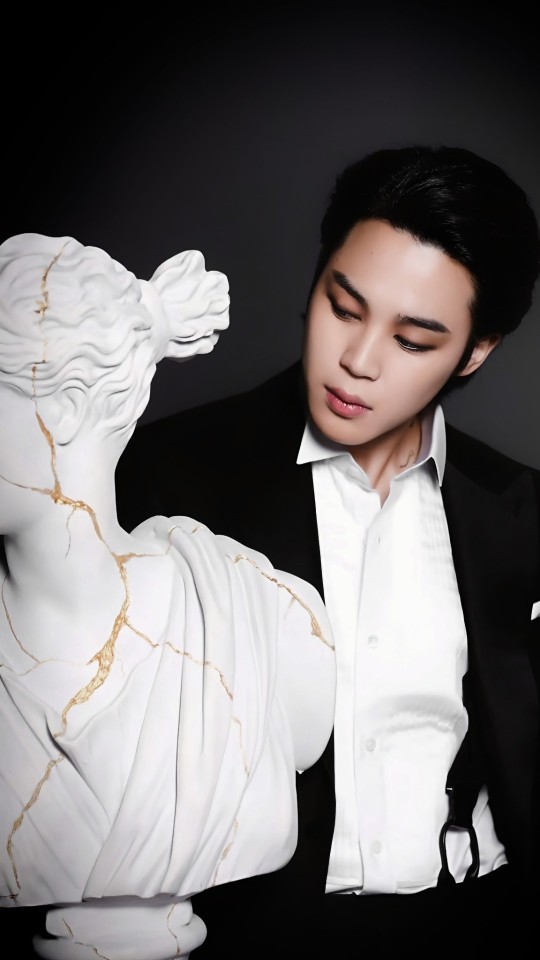

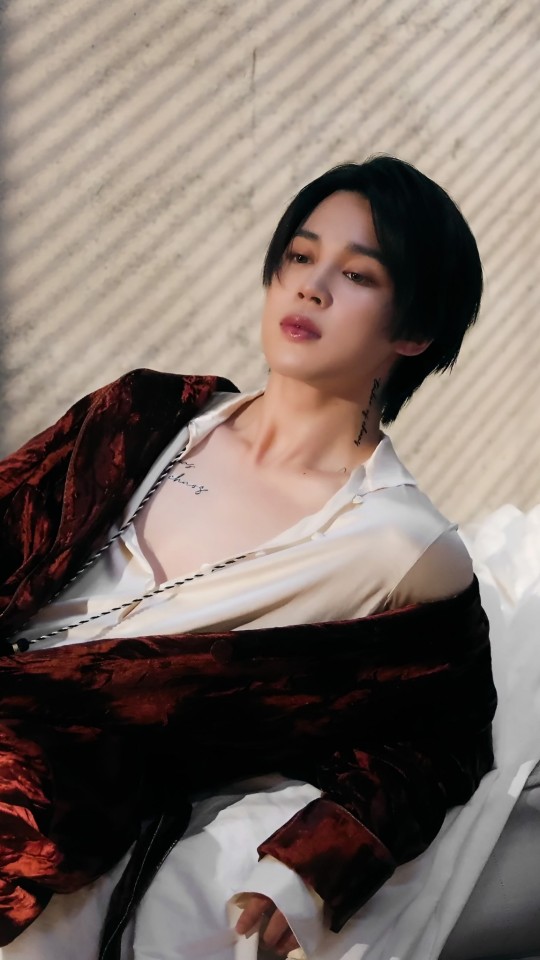


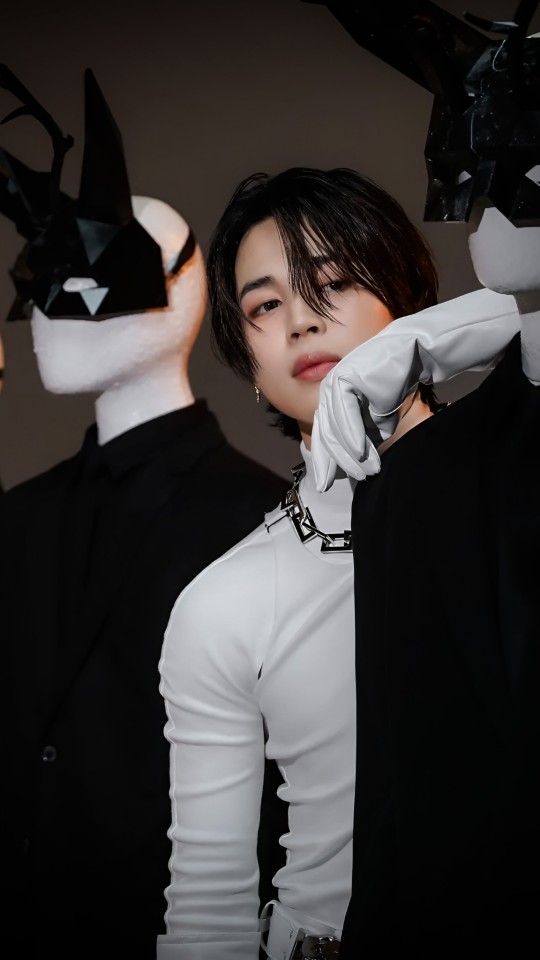
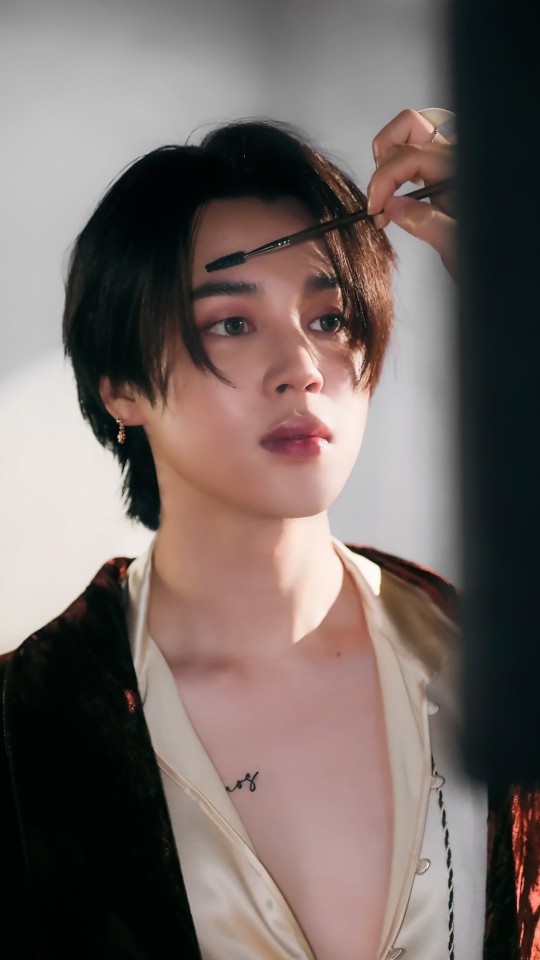


ㅤ ͏ ͏ ͏ ͏ ͏ ͏ ͏ ͏ ͏،ᴊɪᴍɪɴ ʟᴏᴄᴋꜱᴄʀᴇᴇɴꜱ ღ ᴅᴏɴ'ᴛ ʀᴇᴩᴏꜱᴛ
#park jimin lockscreens#jimin wallpaper#jimin lockscreens#jimin boyfriend material#bts boyfriend material#bts lockscreens#bts wallpaper#jimim icons#jimin packs#hd#bts edits#bts icons#bts packs#chaos#id chaos#jimin chaos#jimin photofolio#aesthetic#messy#purple#pink#black#white#mask#edits#layouts#park jimin#jimin
1K notes
·
View notes
Text

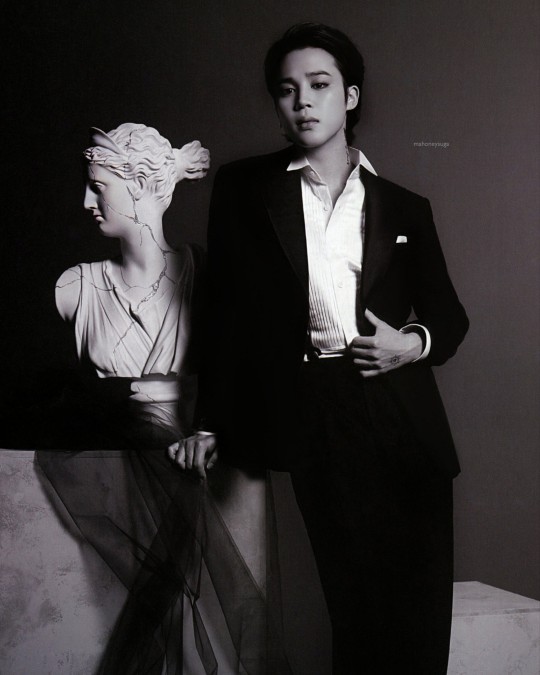



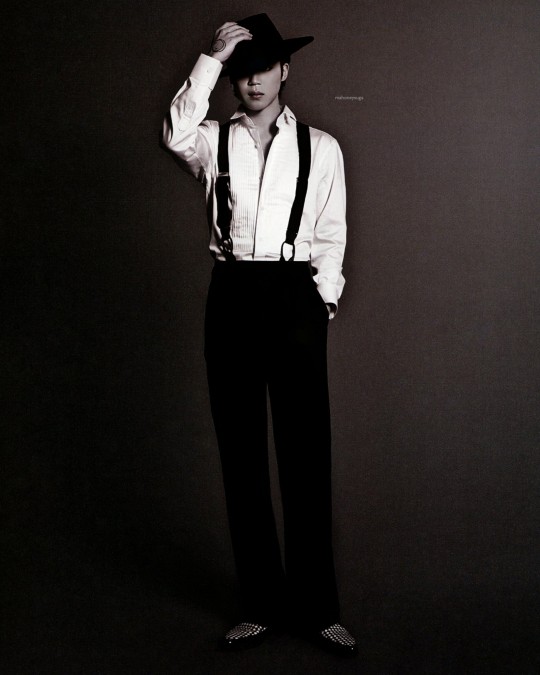
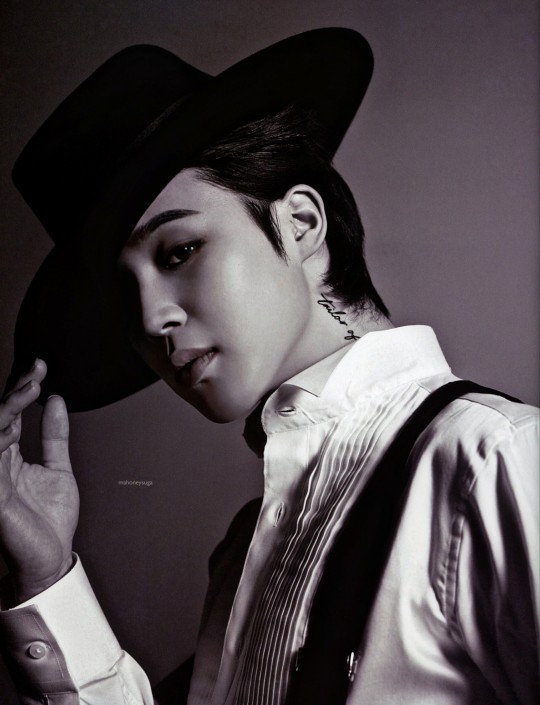
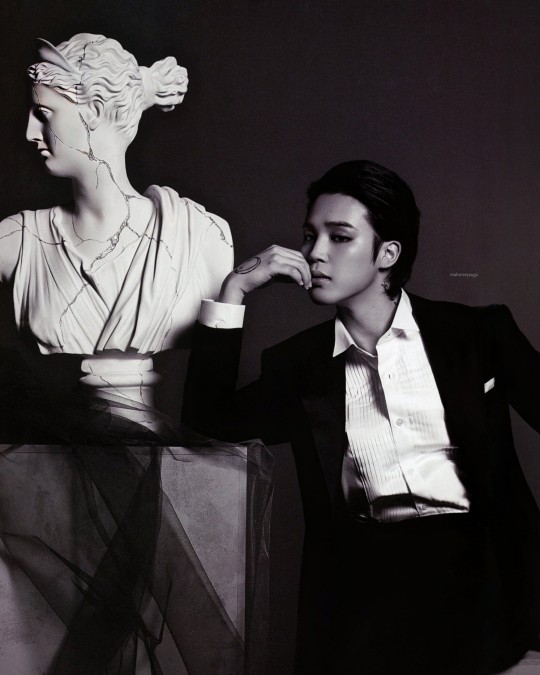
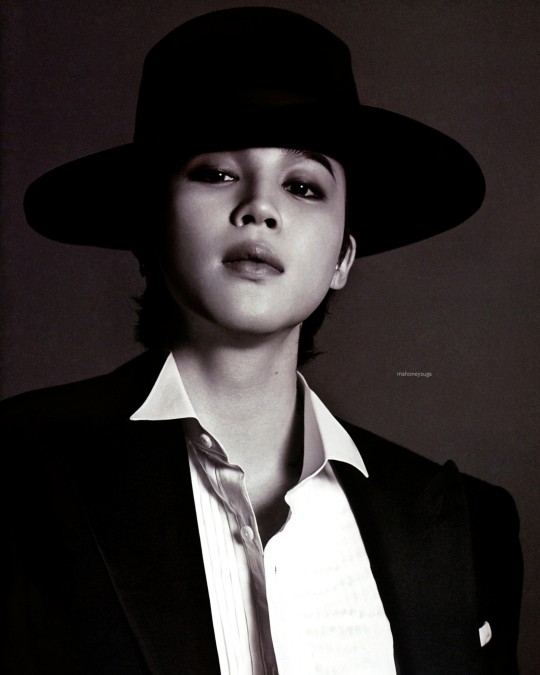
"Tailor of chaos"
#jimin#bts#jimin icons#bts icons#bts jimin#jimin edit#jungkook#taehyung#namjoon#jhope#jin#yoongi#bts wallpapers#jimin wallpapers#tailor of chaos#jimin photofolio
453 notes
·
View notes
Text






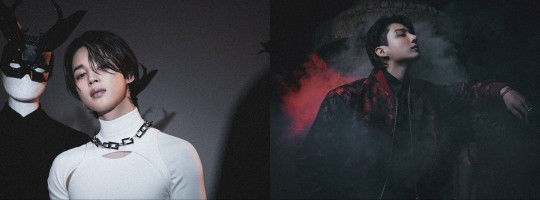

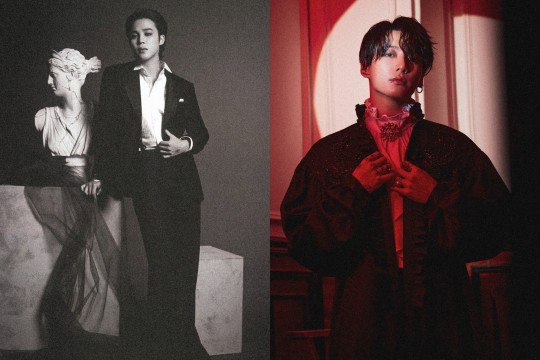

Photofolio beauties pt.2
#the struggle of having to choose between all of those photos#jikook#kookmin#jimin#park jimin#jungkook#jeon jungkook#bts#bangtan#jimin photofolio#jungkook photofolio#ID:Chaos#Time Difference#october 2022
246 notes
·
View notes
Text
Framing Gender Identity Through Masquerade. Hybrid Masculinities in Jimin's Photo-folio
Up until the release of the photo-folio Me, Myself, And Jimin 'ID: Chaos, the performance of Filter for the online concert ON:E has been in the latest years, the most relevant representation of gender performativity for the artist. Jimin made use of visual and dress markers in order to exhibit the ways in which he can play with the idea of destabilizing conventional gender distinctions, but ultimately to ascertain a more conventional masculinity by changing the focus on the sexual undertones of his performance in order to maintain his power over how he is perceived and filtered by the audience. Through the concepts in the photo-folio, he is taking many steps further, committing to a more nuanced portrayal of identity.
This analysis will look at various instances of gender performativity and will identify types of masculinities as taking on different roles in order to demonstrate the way in which Jimin is exerting his subjectivity. Moreover, gender performativity will also be characterized as a form of masquerade and how it becomes a method through which the subject is able to take on those roles, by creating various personas through the use of dressing and how they are used as a metaphor for identity.
By framing these roles as carrying certain visual markers which pertain to a more Western cultural sphere, it is necessary to take into consideration the danger posited by such a position, especially given the fact that masculinities are also influenced by race, class and other, more specific and local classifications. In trying to avoid turning the analysis into one which might be framed as orientalist thinking, I will use Adam Geczy's definition of transorientalism (2019), in which ''a stable cultural identity is really an agglomerate of signs, which, as with any linguistic system, are in the constant process of modification and change''. Globalization, as much as it's a term used more predominantly for the economic sphere, it exists culturally as well, especially given the present use of online connectiveness and the facilitation of crossing physical and metaphorical borders. The position taken in this essay as well, as Geczy understands it, is that identities become a blend or a composite, not parallel to one another. These identities can be material and cultural and can coexist ''in different frameworks at different times''. Such distinctions are made possible today, as they encompass a wider meaning of cultural exchanges, and not just one in which the West is imposing its presence and power over an imaginary East, as Edward Said conceptualized it. These nuances are important because transorientalism explains the fact that cultural identities can be transacted, and not just overpowered by a dangerous West over a helpless East. It also helps in steering away from the danger of nationalistic discourses over identities that disregard the influence of globalization and how identities can reach outside imaginary borders.
Hybrid masculinities versus hegemonic masculinities
Contemporary understandings of masculinities are nowadays understood as hybrids. More often than not, it is applied to white, middle class heterosexual men who borrow elements of non-hegemonic masculinities in order to construct their gender identities through the situational use of feminine or gay aesthetics or more precisely, marginalized identities (Bridges, Pascoe 2014). The vital question that needs to be asked in this context is if hybrid masculinity maintains or actually challenges gender inequality and if ultimately, remains a tool that keeps intact the gender order, or what it's called masculine balance (Young 2017). In most cases, hegemonic masculinity remains intact in situations in which men are able to mark their bodies, usually through dress, in order to perform a hybrid gender identity, but only in situations that allows them the freedom to do so, while at the same time, having the privilege to de-mark their gender performances when it's no longer suited, usually in the cases of reestablishing their hegemonic, normative masculinity and consequently, their heterosexuality.
The concept of hybrid masculinities has been recently used in an analysis of G-Dragon's gender identities across various media contents, specifically because gender acts are also situational (Kim & Lopez, 2021). G-Dragon's case is relevant for this analysis, as it's a case study of a K-Pop idol known for his thought-provoking gender performances. For Kim and Lopez, K-Pop has fashioned and promoted what they call manufactured versatile masculinity – one in which soft masculinity can coexist within the paradigm of conventional hegemonic masculinity. For the authors, G-Dragon's appearances in some music videos and photoshoots may appear and sometimes actually are non-conforming, but they always end up being balanced with situations in which the artist is reaffirming his normative, heterosexual masculinities. If G-Dragon is queering his gender in spaces which offer him that freedom, specifically those that require a more artistic and creative medium, such as a photoshoot, a public appearance on a television program or a performance during a concert become the spaces in which he balances that queerness by stressing a hyper masculine act, through resistance of irreverrance. Ultimately, the fact that G-Dragon is in the position in which he can choose and has the power of achieving that safe masculine balance, is seen as proof of how gender hierarchy is still intact. Despite that, there are scholars, such as Chuyun Oh and David Oh (2017) who see the mere use of queer aesthetics as perhaps a first step on challenging heteronormativity because it does manage to destabilize, even if it happens situationally, the gender system. One conclusion to this on going debate is that recognizing and acknowledging the effort and openness of presenting non-normative masculinities is one that needs to be taken into consideration, while at the same time, remembering that the possibility of choosing when to do so only exists because men have the power to do it though their gender privilege. It doesn't mean it completely cancels the fact that heteronormativity was being challenged.
Looking at the subject of this case study, another K-Pop idol from a different generation, with a different journey, but one that also challenges normative notions of masculinity, can we situate him in the same paradigm as G-Dragon? The answer is yes and no. Like GD, Jimin is more comfortable and more explicit in queering his gender performance in more artistic situations, such as photoshoots or a song performance. The difference is that Jimin (the present one, and not the one who's initial idol persona had to always reaffirm hyper-masculinity) is an idol that doesn't resort back to hyper-masculine acts or tries to loudly reaffirm heterosexuality in order to create that masculine balance. Instead, we find an absence of those situations, in which privacy offers the opportunity of not having to actively challenge the non-normative, carefully crafted masculinity, which seems to receive utmost attention and focus. But what does it say when that happens only in the context of artistic expression? I posit that it shows a form of privilege as well, one in which Jimin has the possibility of exerting his power in creating a hybrid masculinity, one that we'll see later in the analysis, when he takes on different masks and roles, in which his gender identity is a mixture of personas that makes use of aesthetics as a way of keeping a form of distance.
Masquerading gender identity. The Dandy, The Youthful Boy, The Lesbian Butch and The Dominant
The body is now considered to be a canvas, in which the social body can carry different meanings, mediated through culture and social norms. Dressing the social body turns it into a site for creating identities. For Efrat Tseëlon (2001), the concept of masquerade is a better suited paradigm for the 'clothed body' because it touches on the conscious and also unconscious use of disguise. More precisely, 'If the concept of masking evokes an epistemology of authentic identity (‘behind the mask’), locating it on the epistemological side of the notion of performance moves it away from ‘authentic identity’ and closer to ‘an appearance of authentic identity’. Finally, masking, more emphatically than performance, relies as much on visual artefacts as on metaphorical disguise'.
The reason why masquerade is a useful paradigm for the analysis of the concepts created by Jimin in his photo-folio is precisely the notion of the appearance of authentic identity. And this appearance becomes more obvious if we categorize each concept as a role, a specific character that Jimin decides to portray because it offers the frame through which he can express different identities, ultimately queering his gender performance.

In the Light & Darkness concept, we have what can be visually considered the image of a man dressed as a 19th century troubled bohemian. A melodramatic portrayal of suffering beauty, surrounded by broken mannequins, traces of other selves. It's interesting to note how the visual imagery and particularly through dressing, shows Jimin taking the role of a dandy. James Adams (Dandies and Desert Saints 2018) mentions that in Victorian society, masculinity was about doing gender, rather than being. It was a performative act, before non-normative masculinities were seen as pathological. One of those masculinities was the dandy. Despite no definitive notion of what the dandy was in its entirety, it was considered first and foremost, a masculinity that at that time, managed to blur the lines between sexual orientation. For Geczy and Karaminas (2018), 'the dandy strove for calm and relaxed expression. Simultaneously, he was a mixture of smouldering passions and sangfroid hidden depths masked by desuetude – what we might call the romantic epitome of cool. As Charles Baudelaire emphasizes, ''The dandy is blasé, or pretends to be so, for reason of policy and caste''.
In the making of video for the photoshoot, Jimin mentions that the concept shows 'a side within me that is full of thoughts, worries, and is a bit lonely'. His reflection of inner struggle is expressed through taking on a role. One that puts him in the position to be looked at, for his suffering to be admired, as his beauty takes center stage in a space that most likely, express that loneliness. He is confined in a poorly lit room, in which the inanimate object – the mannequin – becomes the visible bearer of a fragmented and tormented soul. Jimin is transferring his feelings in order for his own body to remain intact. It can be seen as a sign of vanity because no matter what he might be going through, the need to maintain a perfect appearance, with a blasé attitude works as a protective shield. There must be beauty even in suffering.

The 19th century Victorian influence seems to permeate another concept, despite not being quite obvious. Its traces are found including in the Color: Freedom concept, specifically through the use of objects – the bust of a Greek goddess and yet again, a celebration of beauty, now more directly associated with youth. All these elements are reminiscent of the Victorian obsession with Hellenism. More particularly, the projection of their fantasies in order to have the ability to show though symbol and metaphor what was not deemed appropriate in a socially constricted society. It's a temporally and spatially localized theme, but one that can be transposed presently in the context in which symbolism is a needed tool for self expression.
Hellenism in the 19th century had multiple functions. Used as a basis for beauty standards, but also as an inspiration for homoerotic works. Oscar Wilde's The Picture of Dorian Gray is a clear example of that and a connection with Jimin's continuous focus on youth, makes this correlation valid: 'Wilde writes for Lord Henry a monologue of hyperbolic and intense flattery that, as if in passing, but really with great rhetorical care, calls Dorian's attention to his own beauty: to his ''rose-red youth'' and his ''rose-white boyhood''(Heacox, 2004). Jimin wearing a colorful crown, with heavy makeup, visually positioning himself next to a Greek bust, while dressing himself in what looks like a more contemporary display of youthful dressing style, transforms himself in the ultimate Hellenistic fantasy. The boy who remains forever young, the image of someone who is untouchable, who can precisely exist in such a way only if he remains a fantasy, like Thomas Mann's Tadzio. What Jimin shows here is a character. He plays the role of the youthful boy, he wishes to remain that way forever and only though this role, he is able to gain his freedom. One that can only be expressed through visual metaphors.

In what can be considered one of the most fascinating concepts in the photo-folio, this particular gender performance is the most intricate one. It's no wonder that a few reactions to Jimin wearing what looks like a 1920s suit, associated his dressing with Victor/Victoria (1982) or Marlene Dietrich. Here, we have what Judith Butler calls drag as subversion of gender roles through the parodic imitation of those gender roles (Gender Trouble). And that parody and consequently the subversive element cannot exist without gender roles. In Victor/Victoria, the character of Julie Andrews is (in her own words), 'a woman who acts like a man who acts like a woman'. Despite the film ultimately affirming binary gender roles, Veronique Fernandez (2001) argues that in the instances in which Victoria acts as Victor, her ''appearance in masculine clothes can be seen as an image of lesbian style'' one that is visually connected to Marlene Dietrich. In her analysis of the double drag, Kennison (2002) explains that Dietrich's image was made out of incorporating classic elements of lesbian butch dress, as well as traditional elements of gay drag, which not only contributed to the erotic element of her performances, but also showed the power she made use of.
In order to explain the association between Dietrich and Victor/Victoria and Jimin's dress choice, I will make one last detour to filmic analysis, that of James's Dean character in Rebel Without a Cause. Marie Cartier's thesis is that through that role, James Dean presented a new type of masculinity, created post war, by the butch women in the urban culture. For a more nuanced interpretation, Cartier calls Dean's presentation as a 'slyly constructed butch' and ascertains that, in the vein of this new 1950s masculinity (of which Marlon Brando famously embodied as well) is that the man acted as a butch woman. The arguments as to why Dean's persona can be seen through this interpretation are one side, behavioral (the actions and dialogue of his character in the film), but also presentational, by choosing to dress himself in the fashion of a lesbian butch.
In the suit concept, to quote and at the same time change the order of the drag, Jimin is a man that looks like a woman that looks like a man. Except, instead of using an outdated understanding of what it means to transgress gender roles, just as James Dean's presentation was that of a 50s butch woman, Jimin's presentation is a 1920s butch lesbian, specifically the way in which it was embodied by Marlene Dietrich. It shows not only the artificiality of socially constructed gender roles, but also the means through which multiple instances of masculinities can coexist in the social body, through dress and through a decision of marking one's body in order to queer the gender performance.
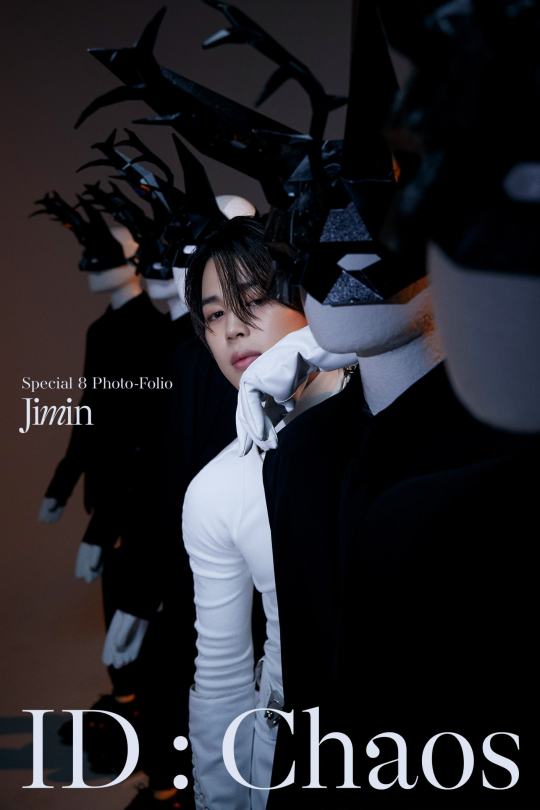
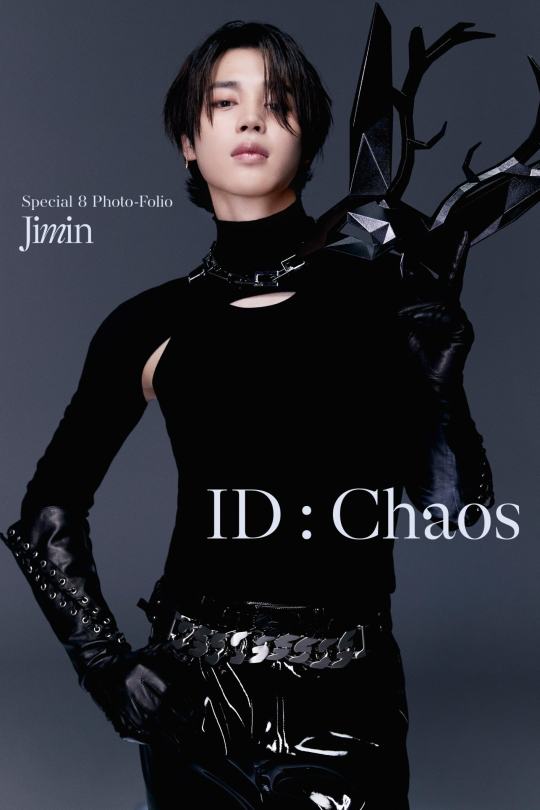
The last role Jimin takes on is that of the Dominant who uses fetish fashion and objects in order to show the side of his inner self that has to be in control once again, through masquerade. For Valerie Steele (2001), masquerade and sexual identity are interlinked, in which fetish fashion is now a way of constructing a sexual identity. In Jimin's photoshoot, he wears leather pants and gloves, completing the fetishist look with a mask that covers his eyes, a prop used by a dominatrix and a slave as well, each for different purposes. In Jimin's case, he acts the role of the dominant. This particular type of fetish representation, ''black leather, its feel, smell, and touch, as well as its associations to animal skin and its predatory impulses, induce sexual excitement with their connection to discipline and domination'' (Geczy, Karaminas, 2018). In this concept, Jimin presents himself as a sexual being, focusing on a very specific erotic imagery and role. Taking on the role of a dominant, he once again shows the need he has for control, a motif that has its more visible origins in Filter. It also shows he still needs to keep parts of himself hidden, perhaps offering a peak through disguise, on taking upon himself a persona through which he can communicate. Showing himself in a fetish fashion accentuates the theatrical and artificial construction of this part of his self, in which artistic expression becomes a safe method to do that.
As with Filter, and in the Light & Darkness concept, the mannequins are present here as well, introduced by Jimin as his other selves. They appear wearing a black suit and a mask, in a setting in which Jimin stands out, wearing white. It shows an objectification of self, of being able to look at various forms that are once part of him, but also can be seen as the filters through which others are seeing him. In this instance, Jimin takes on the role of the observer, while at the same time he's being watched, as he is surrounded by the mannequins – the former, artificially constructed selves.
A fragmented, controlled self?
Jimin's journey of self discovery is shown in this photo-folio through his gender performances. He finds a freedom in the context of artistic expression through the use of various roles he takes upon himself. His inner, raw self, as he explicitly mentioned in one of the teaser videos, is one that can be shown through disguise, which in turn, allows him to be in control of every narrative, of every role he plays, of the different forms of his hybrid masculinity. Jimin finds refuge in drag, in its subversion and exaggeration. The question is if his inner self is still kept hidden, a part that is not for public consumption to be analyzed and scrutinized, or its nothing but a fragmented self in which various personas coexist and which can rise to the surface as long as Jimin is completely in control of how he wants to be perceived?
List of references:
Marie Carter, The Butch Woman Inside James Dean or 'What Kind of Person Do You Think a Girl wants?' (2003)
Rebecca Kennison, Clothes Make the (Wo)man: Marlene Dietrich and 'Double Drag' (2002)
Veronique Fernandez, 'People Believe What They See': Clothing And Gender(s) in Victor/Victoria (2001)
Joanne Entwistle and Elizabeth Wilson eds., Body Dressing (2001)
Minjeong Kim and April Lopez, The deployment of gender for masculine balance: analyzing multi-platform K-Pop performances (2021)
Thomas L. Heacox, 'Idealized Through Greece': Hellenism And Homoeroticism in Works by Wilde, Symonds, Mann and Forster (2004)
Adam Geczy and Vicki Karaminas, Fashion and Masculinities in Popular Culture (2007)
Adam Geczy, Transorientalism in Art, Fashion and Film. Inventions of Identity (2018)
Ben Barry, (Re)Fashioning Masculinity: Social Identity and Context in Men's Hybrid Masculinities through Dress
132 notes
·
View notes
Text
Jimin's Got that Busan Juju + A Comment on His Photo Folio (Repost)
Anonymous: Hi BPP, I hope the concert was wonderful and everything you asked for. I would really like to know your opinion/analysis about my query below because I started with BTS last year and I am still struggling to figure this out.
So before I started with BTS, the one person whose name I constantly heard was Jimin. Some of my friends who are into BTS loved him and it felt like he was everywhere so when I started with BTS I tried to avoid him. I tend to veer towards the less well known member. However, no matter how hard I tried, I always saw myself watching Jimin. It started with performances and then everything else. Now I don't think he is my bias. I often try to stay loyal to the hyung line but I somehow end up looking at Jimin. I just don't get it. What sort of magic is this? Am I noticing him because everyone else is? I am so confused about this whole situation. Like I know he is good to look at but any idea what the deal is. Lol, I sounds like a teenager with a crush. Do other people feel this as well or am I actually a teenager with a crush?
Lol even if you don't respond to this, I hope this makes you laugh.
***
It’s that Busan juju.
It’s his God-breathed visuals.
Gaia herself crafted that man to be every man, woman, and other’s dream. Athena’s rival, Aphrodite’s muse, Beyonce’s godson.
Jimin’s visuals have always been my favorite. His vocals have always been my favorite. And I’ve slowly come to accept he’s the best dancer in BTS. There was a time (mid-2018 or so) that he seemed so perfect I briefly considered the possibility he might be a sociopath.
Sometimes he falls off my radar (the rapline consistently stay on my radar) but then he pranks Hobi, says something savagely sassy, or his vocals pierce my brain like a lightning rod and he gets on my radar again.
The new ARMY recruit (non-ARMY friend who watched the Grammys) asked me recently why I don’t think of Jimin as my bias or even bias wrecker (that title belongs wholly to Jungkook), and all I could say is that he doesn’t annoy me enough to be my bias, and with how much I like Jimin, I like Yoongi a touch more, Hobi a teeny bit more, and Joon about as much as I like Jimin, maybe. Why that is exactly, I don’t know. People choose their biases for all sorts of reasons, or rather, their biases choose them.
Jimin is a bit of a special case because everybody notices him. It’s quite literally impossible not to. It’s why so many people feel threatened by this guy breathing anywhere near their biases, cause they know their biases would sooner get on one knee, or better yet, turn around and kneel with their asses in the air, for Jimin to do whatever he wants. I just need y'all to watch any of their MV reaction videos, I mean BTS reacting to themselves. Pick anyone at all. And look at their faces when Jimin comes on the screen. I almost feel embarrassed for them because it’s so obvious. Jungkook showed up in Chelsea boots during soundcheck the other day, and his energy? Hyung’s copycat indeed. They all see Jimin for what he is. Jimin himself knows what he is. I have a pet theory that one reason he’s so heavily leaned into his ‘cute, harmless, almost helpless good boy’ persona lately, is to try to seem less threatening. Most maknae line solo stans hate him to a hilariously absurd degree, because they view him as real competition. It’s why they’re so proactive with their hate, always on schedule, never missing a deadline. Some hyung-line akgaes too feel that way tbh. I’ve seen more than one person say Jimin is this generation’s Prince (the artist). And let me add something I’m working on in response to another ask about my favorite sub-unit in BTS (it’s 3J after the rapline): the 3J unit is the only unit filled with aces. You read that right. J-Hope, Jimin, and Jungkook are the true aces in BTS, it might just take some work to see it cause one of those three people goes around saying he wants to be waited on like Cleopatra taking milk baths.
Anyway, I digress.
I hate to be that person, but in your case, you sound a bit like Anthony Bridgerton talking about Kate Sharma. You can’t take your eyes off him? You end up looking only at him? Anon, you might be under the Jimin Effect. I suspect you’ve Jim-ined and cannot Jim-out, as they say.
Maybe accept it? Loving Jimin is a very enjoyable activity and I can speak from experience.
Originally posted: April 12th, 2022 8:00am
**
Repost EDIT: Reading this post now, after Jimin's photofolio teasers have dropped, made me Laugh. Out. Loud.
Y'all, I hollered. Jimin really is something else, and whatever he is, only Jimin himself knows it. The other members have a very good idea, but the full expression of Jimin is something only Jimin knows. And that makes me giggle. It makes me love him a little harder. It makes me feel things - to know that there will always be something new to learn about him, to explore with him.. it's an intoxicating feeling. It's one I feel sometimes when I think about Namjoon, Yoongi, and Hoseok. The only criticism I have of Jimin's photo folio, is that it comes with no sound, and that's a criticism I'm making only because it's Jimin. I wish this photofolio was a film series instead. Only because I want to hear more of Jimin's vocal evolution. Imagine what he would sound like inspired by the moon's relationship with Artemis, or "freedom"...
Anyway, I hope whoever wanted a copy was able to get one. I hope the worry-toned asks I was frequently getting about Jimin, subside now. I hope his antis finally get a clue. And I hope more of us sit back and just enjoy the ride that is Park Jimin. I've said before that I think he is the most threatening person in k-pop. Lol. It's just what it is.

(He's problematic)
*

(I mean look at him)
*
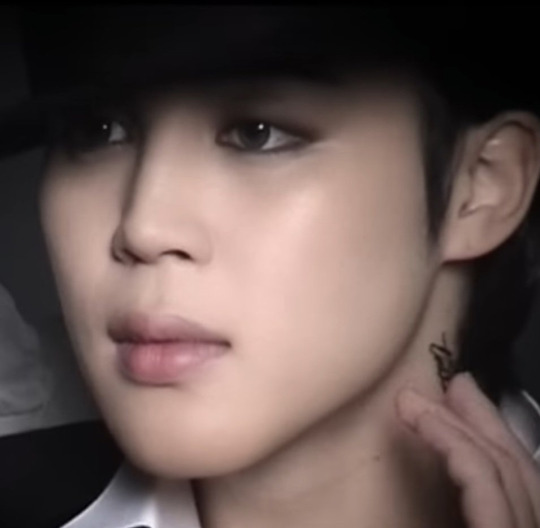
*
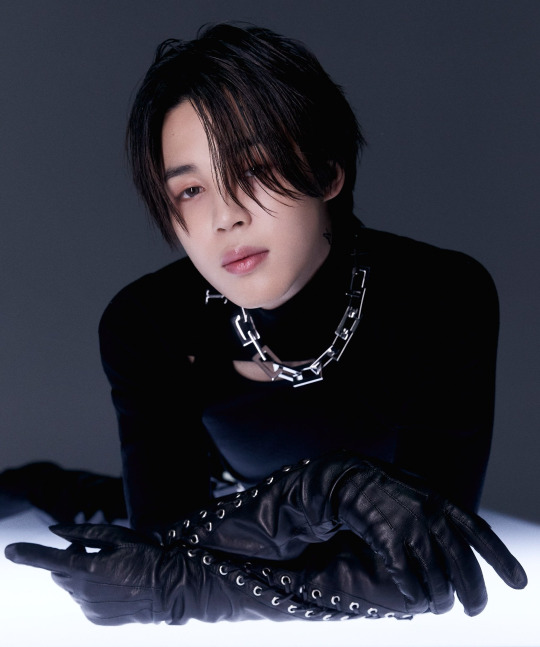
(It's the casual arrogance for me)
*

(Qu'y a-t-il d'autre à dire ?)
Y'all, I laughed. 💜
49 notes
·
View notes
Text
Fuck us all. Jimin is going to ruin us.
Do you have any idea you MF how insanely beautiful you are? And how this 15-sec clip made me moan and whimper?
Fuck, Jimin, you are fucking magnificent. And that white suit? How did you make that so fucking hot?
THE Park Jimin is fucking untouchable.
youtube

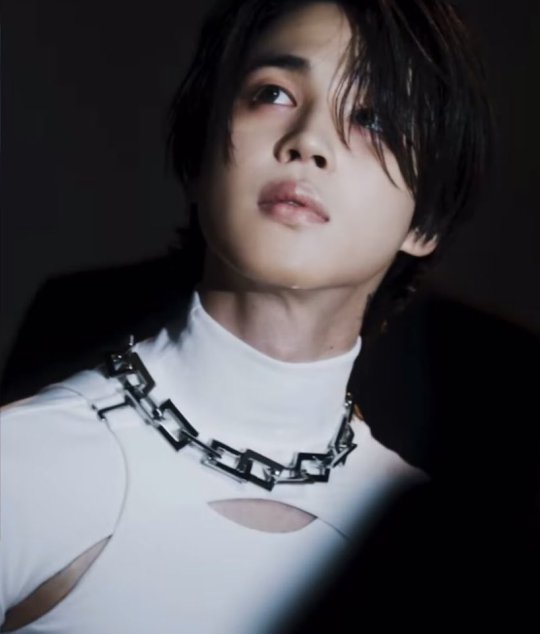

CAN YOU BELIEVE THIS FACE? SHIT!

#THE Park Jimin#park jimin is fcking beautiful#jimin is hot and sexy and he knows it#i want that god damn photobook last week#bts jimim#jimin photofolio#Youtube
15 notes
·
View notes
Text
Has no one made the Jackalope connection yet? (They probably have, I just haven’t seen it lol)

The mask is a Jackalope. A mythical creature that looked like a rabbit with the antlers of a deer- known for being violent and fierce.
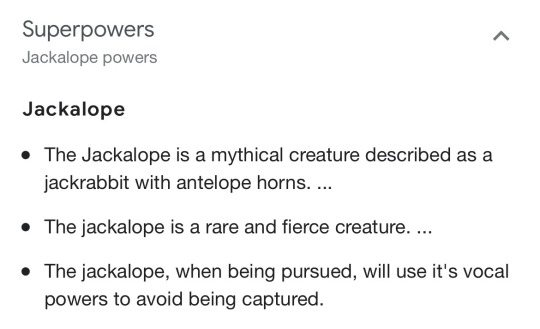

I’m not saying that Jimin is also rare and fierce but that’s exactly what I’m saying
12 notes
·
View notes
Photo


he’s unreal
#btsgif#park jimin#jimin#bts#*#*jm#bangtantv#photofolio#ok one more set after this and then the rest tomorrow hihi.
7K notes
·
View notes
Photo

ALL RELEASED PREVIEWS FOR JIMIN'S PHOTOFOLIO.
#jimin#photofolio#park jimin#jiminedit#pjmedit#btsedit#dailybts#dailybangtan#dailybg#kpopccc#ultkpopnetwork#bts#bangtan#*#edits*#by renata
1K notes
·
View notes
Photo
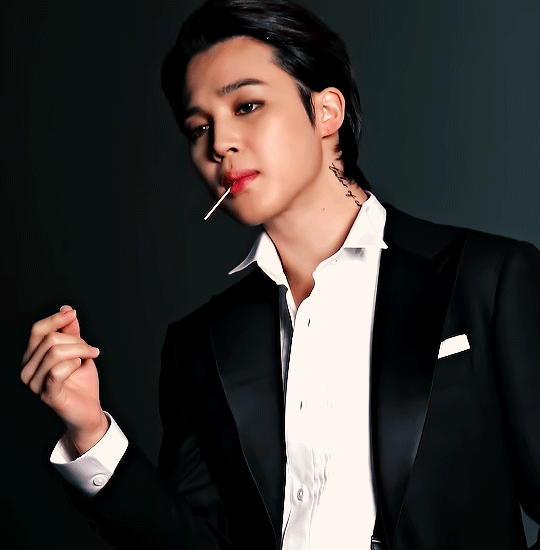
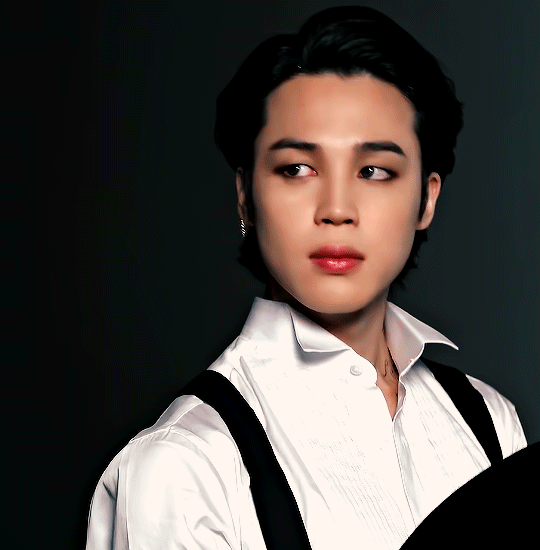
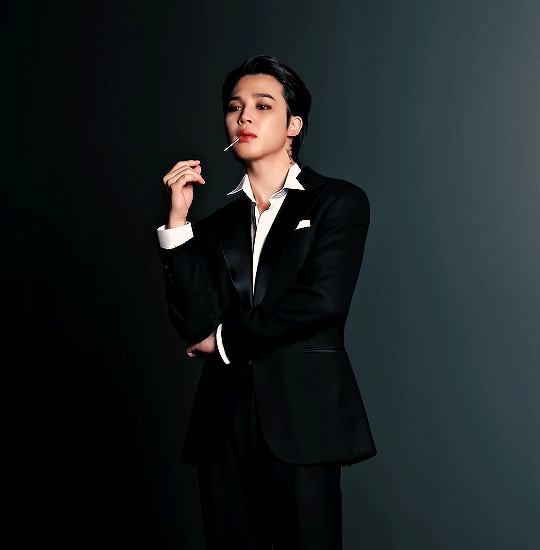
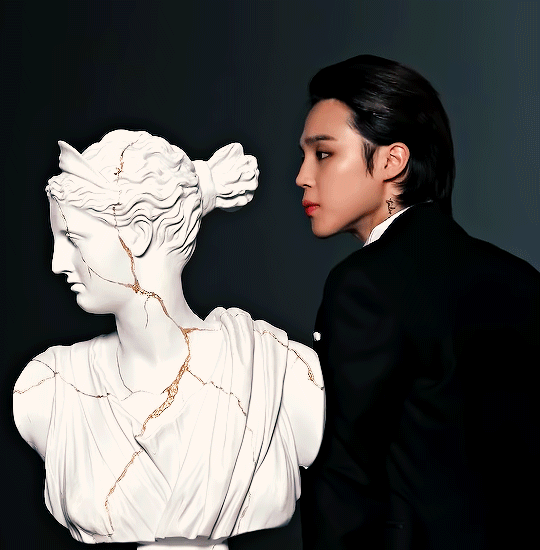
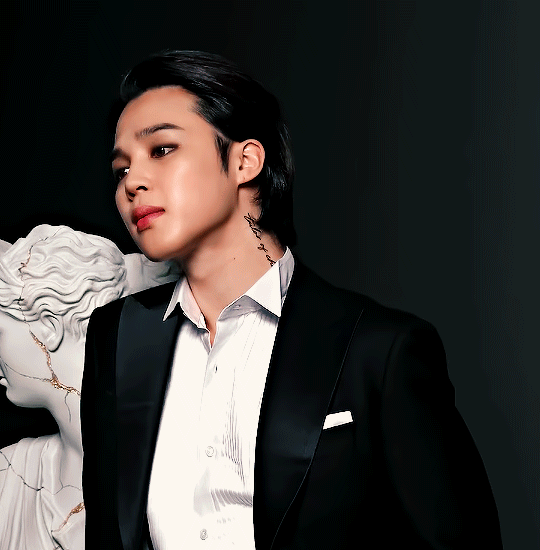
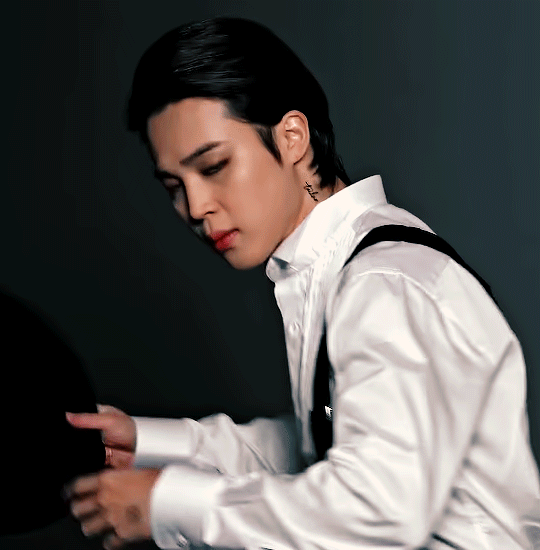
tailor of chaos, tailored to chaos
#btsgif#dailybts#networkbangtan#bangtanarmynet#pjmdaily#btshoneyhive#usermaggie#usermanny#usersky#userkelli#usertaeyungie#jiminedit#me myself and jimin#jimin photofolio#*jm#*gifs#I really like these#the gender envy
2K notes
·
View notes
Text



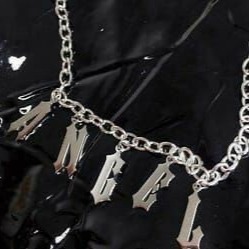
꒰ : 🧷 all new hope ⭒ `` ⑅ ꒱



⊹ ノ ⭒ 🕸️
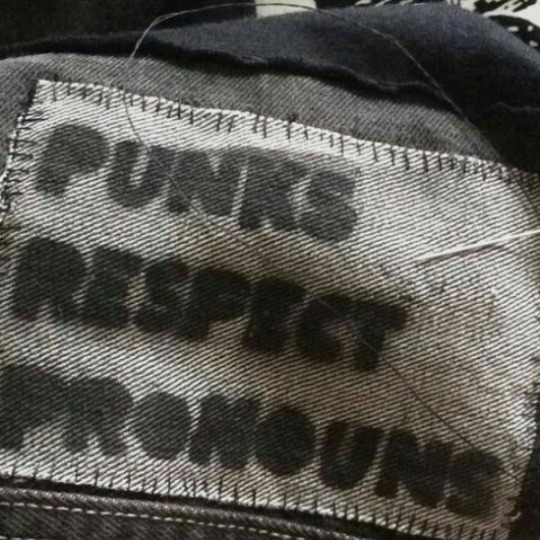


#jhope moodboard#jhope aesthetic#bts jhope#jhope#hoseok moodboard#hoseok#jhope layouts#jhope icons#jhope packs#jhope headers#jhope lockscreens#hoseok icons#jhope photofolio#bts moodboard#bangtan#bts icons#bts jimin#bts taehyung#bts jungkook#bts#bts namjoon#bts jin#bts yoongi#dark moodboard#kpop moodboard#black moodboard#messy moodboard#random moodboard#grunge moodboard#y2k moodboard
224 notes
·
View notes
Text







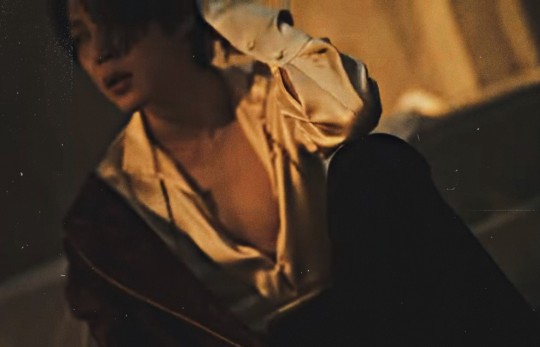
"Tailor of Chaos" FILM #2
#jimin#bts#jimin icons#bts icons#bts jimin#jimin edit#bts wallpapers#jimin wallpapers#tailor of chaos#jimin photofolio#bts photofolio
122 notes
·
View notes
Text
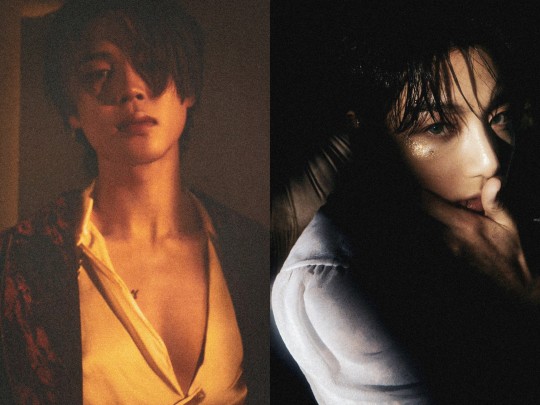
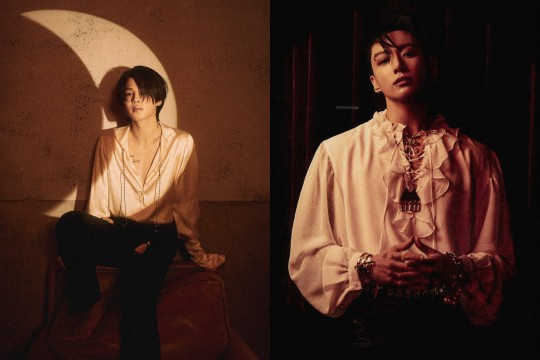







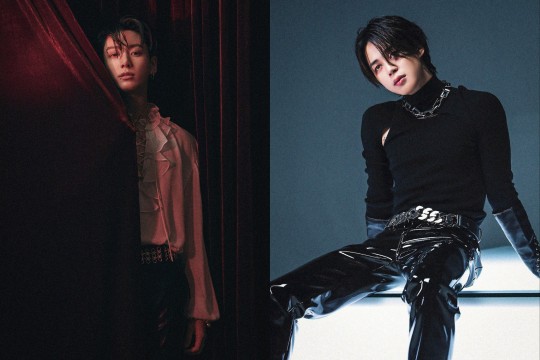
Photofolio beauties pt.1
#the struggle of having to choose between all of those photos#jikook#kookmin#jimin#park jimin#jungkook#jeon jungkook#bts#bangtan#jimin photofolio#jungkook photofolio#ID: Chaos#Time Difference#october 2022
192 notes
·
View notes
Text
I guess it really is Chaos. There's so many elements in the teaser for Jimin's photofolio that look like they were picked out from different concepts and thrown together, but somehow they make complete sense. Not in the way that I can completely understand what he's trying to show, as the clip was heavily fragmented, but it's quite a substantial glimpse into the mind of Park Jimin. There's leather, chains, white silk, antlers, mannequins, Artemis, Kintsugi, symbolism, the tracklist to Welcome to Oblivion by How to destroy Angels? What is going on inside that head of his?

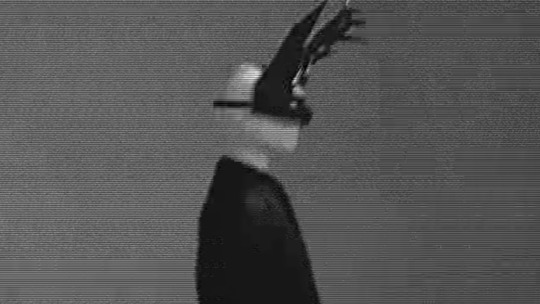
I see repeating motifs that remind me of Filter, from props to clothes and hats, except Jimin shows a more seductive and dark version. I see a man dressed in a suit that makes me think more of Marlene Dietrich and film noir, Victor Victoria or the YSL suit, rather than a typical image of a guy wearing a banal suit. And all this is supposed to encompass what Jimin means when he says he wants to show a raw version of his self. For a man who dipped his toes into exploring different facets of his identity in Filter, the Tailor of Chaos becomes even more intriguing and a step forward in self expression.
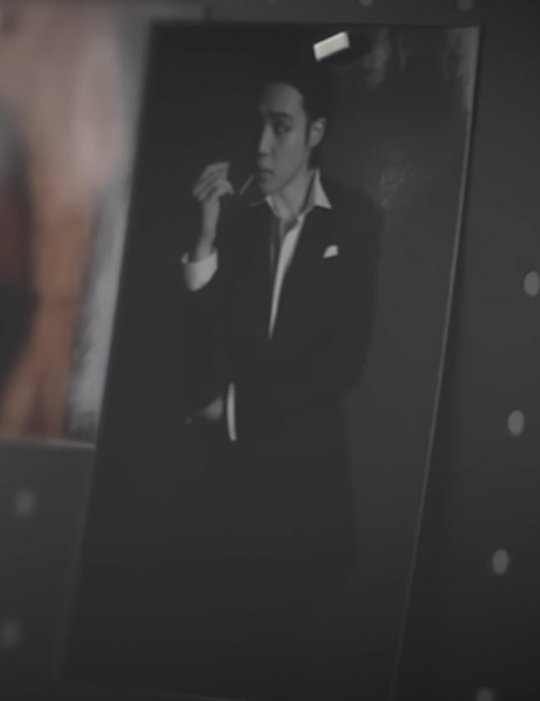
It's a nice change to see a person who has a vision and a clear concept in their head and who is able to tell a story. Jimin is still enigmatic precisely because after showing the audience the teaser of what is closer to who Jimin as (different from Jimin of BTS), I don't get the feeling that I have him figured out. He's even more fascinating because of the things he's into.


73 notes
·
View notes
Note
I just watched Jimin's Photoshoot Sketch...and it's too much.
Do you know that feeling when you taste something so delicious, you get the feeling that your senses need more time processing whatever is happening and then the moment is already over? And you start thinking that you need better taste buds to truly be able to appreciate it, but your taste buds just aren't good enough?
It's a little bit of a weird analogy, but I don't know how else to put it.
He's truly something else.
From one angle he looks soft, almost delicate. And then he changes the angle and suddenly he looks muscular, lean and strong.
One moment he has a soft, dreamy face and suddenly he turns around and assassinates the camera with his eyes:
https://youtu.be/RXT0V2-Sv4k?t=350
And the funny thing is: his facial muscles don't even move a lot. It's so subtle.
And what the hell was that:
https://www.youtube.com/watch?v=RXT0V2-Sv4k&t=224s
An entire movie scene could be made out of that look.
I'm sorry. I'm gushing in the most cheesy way. But I just needed to let that out of my system.
**
Hi @guacamoli-avocadorado
It's the perfect analogy.
Jimin is delicious.
He's a meal for one, or two, or six. For some, he might be an acquired taste, but he's a delicacy in either case.
"One moment he has a soft, dreamy face and suddenly he turns around and assassinates the camera with his eyes:"
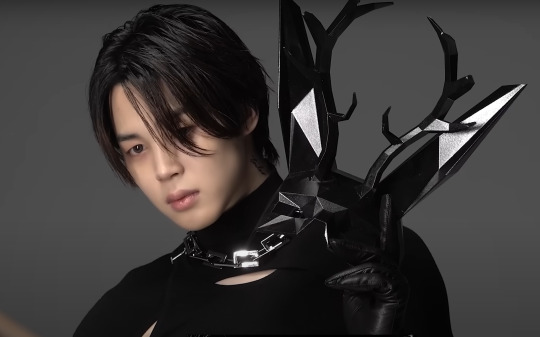
(Lol at "assassinates" but I get exactly what you mean. You told no lies)
*
"And what the hell was that:"

(That was Park Jimin that's what)
*
Jimin is hot.
We all know it. He's got the sort of face that has to be captured for posterity. A face that should always, on principle, be gushed over.
*
I wonder what sides of himself he'll show for his solo album. Will it be more Freedom, or more Black: Come Face to Face, or like something else altogether?
One thing about Jimin, he always keeps things interesting.
16 notes
·
View notes